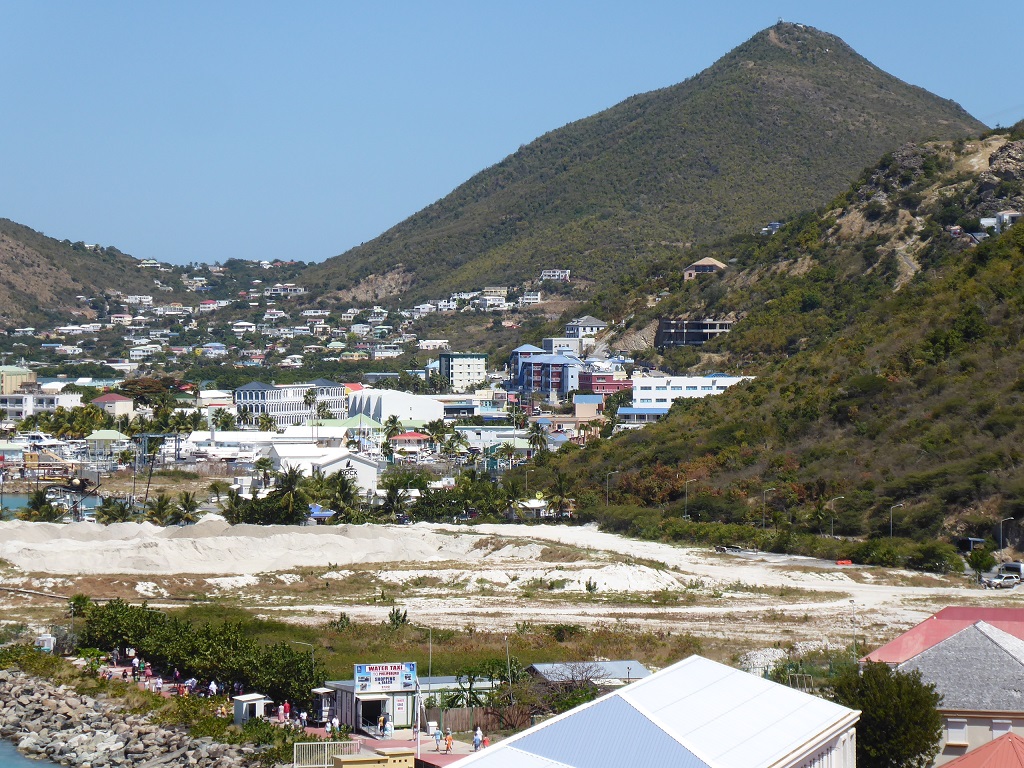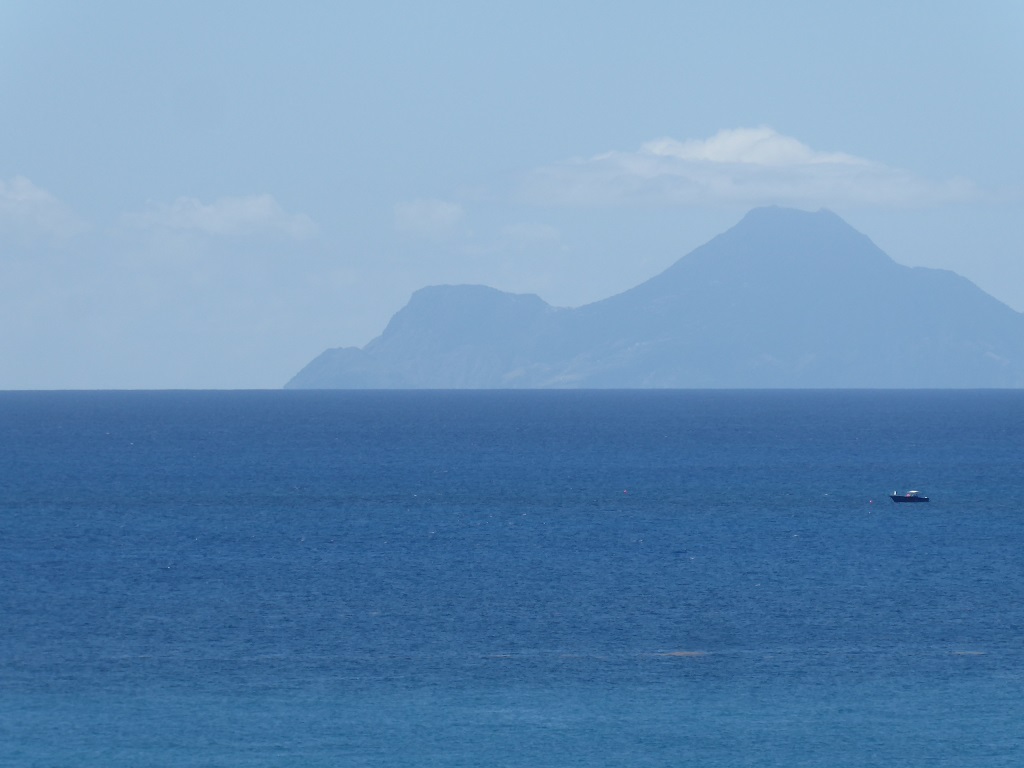


 |
 |

|
|
Trip Planning |
Chuck and Viriginia on our cruise in October of 2022 on the Celebrity Beyond, currently the most expensive ship ever built!

We visited Barcelona, Malaga and Cadiz in Spain. Then stopped in Lisbon Portugal and on to the Azore Islands. We ended up in Newark after crossing the Atlantic.
The weather was wonderful the first six days of the cruise, 70 degrees and no wind. Then we hit bad weather, rough seas and strong winds, the Atlantic sea currents were running both north to the south and east to the west.
As the waves hit the ship, at times it actually vibrated. The Captain said it was very strange for this to happen!
We had a cruise planned over a year ago but it fell through due to the pandemic.
The money we had put down was used to help pay for this cruise visiting the southern Caribbean Sea!
| Personnal Travel Agent - Gerard Ramos - Vacations to Go |
G
He is is so helpful and responds quickly to questions one might have about traveling, especially in a time of uncertainty as far as Covid is concerned.
Gerard Ramos
Master Cruise Counselor
Vacations To Go
gramos@vacationstogo.com
My office hours: Tue-Sat: 8am-5pm (US Central Time)
US and Canada: 1-800-338-4962 ext. 7487
Feel free to tell Gerard you viewed his business as a travel agent on my website.
Saint Maarten Islands Flag History
Sint Maarten, as a Dutch possession on the island of Saint Martin, had been solely under the Netherlands national flag until, after becoming a component of the Netherlands Antilles, it also began flying that territory's flag when it was introduced in 1959. However, Sint Maarten wished to have its own flag. Many suggestions for a flag design were made, including incorporating a number of
The flag's main colours - red, white, and blue - reflect those of both the Dutch flag and the French national flag (Sint Maarten shares the island with Saint-Martin, an overseas collectivity of France). The design of the coat of arms is centred on a rendering of the distinctive courthouse at Philipsburg (Sint Maarten's capital), which is set within an orange-bordered light blue shield (representing the colours of the Dutch royal family). There are also a bouquet of yellow sage blossoms (genus Lantana) with green leaves, a rendering of the white monument demarcating the border between the French and Dutch parts of the island, and a gray pelican superimposed on a yellow sun above the shield. Wrapped around the lower portion of the shield is a yellow ribbon containing, in light blue lettering, the territorial motto: "Semper progrediens" ("Always progressing"). The colours of the flag and coat of arms symbolize blue for the sea, light blue for the sky, green for the fertility of the island, red for the blood of the inhabitants, and yellow for the energy of the people.
Saint Maarten Island's History
The island of St. Maarten has a full history that dates back to 3000 B.C when the indigenous Arawak and Carib tribes first inhabited the land. On November 11, 1493 the island was discovered and named by Christopher Columbus. Since this time, St. Maarten has experienced many cultural influences from different nations such as The Netherlands, France, Spain, and England.
St. Martin gets its name from an ancient celebration called "the Feast of St. Martin of Tours". This holiday that was commonly observed throughout Europe, celebrates the end of the agrarian year and the beginning of harvesting.
The island of St. Maarten was discovered on November 11, 1493, which was the same day this ancient holiday was held. So the island was then named St. Martin, in honor of "the feast of St. Martin".
Archaeological findings have revealed the existence of Amerindian cultures on the island of St. Maarten since 3000 B.C. These indigenous people arrived from the coast of Venezuela and inhabited the Island of St. Maarten until 1600 A.D.
The natives originally named the island "Sualouigia" meaning "Land of Salt" because of the abundant salt ponds dispersed across the island.
The first natives to the island of St. Maarten were the Arawak and the Carib tribes.
The Arawak were a peaceful and agricultural people with their focus being on farming, fishing, and hunting. They lived in wooden huts with straw roofs that were specially built to resist hurricanes and mainly cultivated crops such as corn, tobacco, and cassava. Known for their docile and tranquil nature, they were not natural fighters, this led them to be brutally overtaken by the Carib tribe later on.
On the other hand, Carib people were known for their aggressive war-like nature. They were maritime people who sailed throughout the Caribbean conquering island after island. They raided the Arawak settlements and enslaved many of them about 30 years before European settlers came.
The arrival of the Europeans started in 1493 when Christopher Columbus claimed St. Martin for Spain. Shortly after Columbus' arrival, many countries such as the Netherlands, France, Spain, England, and Portugal sought to profit from the island's natural salt deposits. Salt was a rare commodity in Europe and was quite a profitable trade, this resulted in many wars between the French, Dutch and Spanish settlers.
With Spain retreating in 1648, the French and the Dutch nations signed a treaty in 1648 called the Treaty of Mount Concordia, that divided the island into two parts. St. Martin then became a dually owned island.
Even with the treaty of Mount Concordia signed, ownership of St. Martin passed through the hands of several different countries who were trying to gain control over the island's natural resources during the 18th and 19th centuries. The island thus experienced cultural influences from France, England, The Netherlands, Spain, and the United States during this time period.
During the early 18th century, slaves were used to work on the many sugar plantations that were developed, this lasted until the abolition of slavery in 1848. The abolition of slavery led to the downfall of the sugar industry in St. Maarten, this caused a decline in commercial trade and forced many to leave the island.
In the early 20th century with St. Maarten's natural resources being depleted, the population of the island went down to 2,000 people. In 1940, with World War II on the scene, things changed for St. Maarten. The trade between St. Maarten and the United States intensified and it led to a very prosperous period for the island.
In 1943, Princess Juliana Airport was founded. The United States was forced to build many runways because of the threat of German submarines in the Caribbean. This became a very important airbase for the US in their attack against the Germans. During the presence of the United States on the Island, English became the main language of St. Maarten.
In the 1960s there was a significant rise in the tourism economy. St. Maarten, being only four hours away from the United States and having beautifully sunny and sandy beaches, experienced significant economic growth. The population of the country quickly jumped from 4,000 in the 1960s to more than 40,000 by the end of the century.
Ship's Itinerary & Map
Our first stop after leaving Tampa Florida is Puerto Rico and then Sint Maarten. I spent one of my birthdays in Puerto Rico for almost two weeks a few years ago so I won't be doing any tours of the country again.
Fine Dining on the Celebrity Constellation
Fine dining preordered online before boarding the ship. On our last cruise people signed up for special dining months in advance and locked others out when they tried to sign up iafter boarding the ship.
This is our special dining for the first three days of our cruise!
- Day1 at Sea. - Celebrity Select Dining at 06:00 PM
- Day 2 at Sea - Tuscan Grille Dinner at 06:30 PM
- Day 3 at Sea to Puerto Rico - Le Petit Chef at Qsine at 06:00 PM
Saint Maarten Island Photos

 distinctive symbols, before the government decided upon the final version. That flag, which included the coat of arms of Sint Maarten (established for the territory on Nov. 17, 1982), was introduced on June 13, 1985. Upon the dissolution of the Netherlands Antilles on Oct. 10, 2010, Sint Maarten became an autonomous state within the Kingdom of the Netherlands, and the flag of Sint Maarten replaced that of the Netherlands Antilles as the territorial standard.
distinctive symbols, before the government decided upon the final version. That flag, which included the coat of arms of Sint Maarten (established for the territory on Nov. 17, 1982), was introduced on June 13, 1985. Upon the dissolution of the Netherlands Antilles on Oct. 10, 2010, Sint Maarten became an autonomous state within the Kingdom of the Netherlands, and the flag of Sint Maarten replaced that of the Netherlands Antilles as the territorial standard.








Created on: 2022.06.17
Return to Chuck
 Buntjer's Home Page
Buntjer's Home Page
Updated on: 2023.03.07